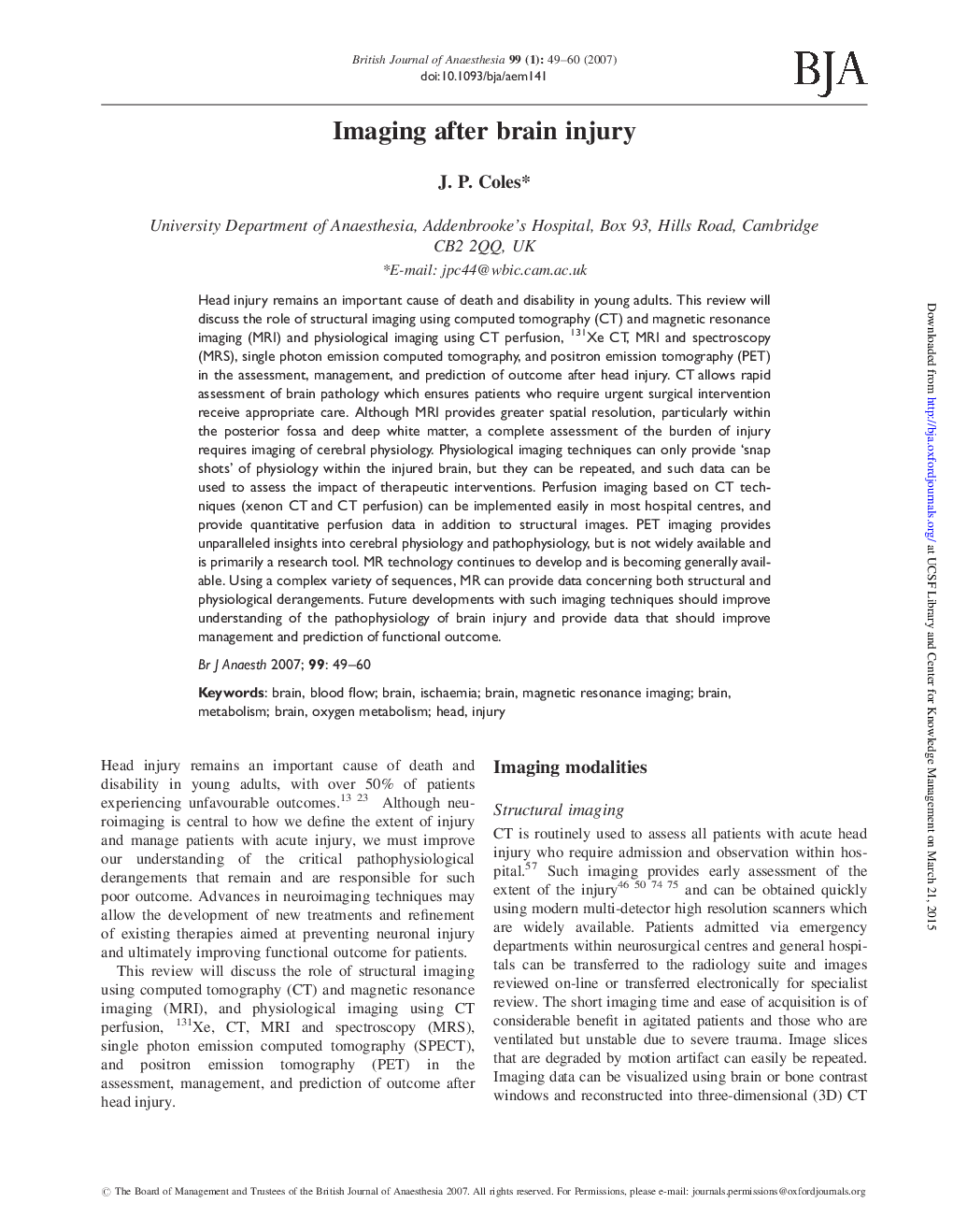| Article ID | Journal | Published Year | Pages | File Type |
|---|---|---|---|---|
| 8938819 | British Journal of Anaesthesia | 2007 | 12 Pages |
Abstract
Head injury remains an important cause of death and disability in young adults. This review will discuss the role of structural imaging using computed tomography (CT) and magnetic resonance imaging (MRI) and physiological imaging using CT perfusion, 131Xe CT, MRI and spectroscopy (MRS), single photon emission computed tomography, and positron emission tomography (PET) in the assessment, management, and prediction of outcome after head injury. CT allows rapid assessment of brain pathology which ensures patients who require urgent surgical intervention receive appropriate care. Although MRI provides greater spatial resolution, particularly within the posterior fossa and deep white matter, a complete assessment of the burden of injury requires imaging of cerebral physiology. Physiological imaging techniques can only provide 'snap shots' of physiology within the injured brain, but they can be repeated, and such data can be used to assess the impact of therapeutic interventions. Perfusion imaging based on CT techniques (xenon CT and CT perfusion) can be implemented easily in most hospital centres, and provide quantitative perfusion data in addition to structural images. PET imaging provides unparalleled insights into cerebral physiology and pathophysiology, but is not widely available and is primarily a research tool. MR technology continues to develop and is becoming generally available. Using a complex variety of sequences, MR can provide data concerning both structural and physiological derangements. Future developments with such imaging techniques should improve understanding of the pathophysiology of brain injury and provide data that should improve management and prediction of functional outcome.
Keywords
Related Topics
Health Sciences
Medicine and Dentistry
Anesthesiology and Pain Medicine
Authors
J.P. Coles,
